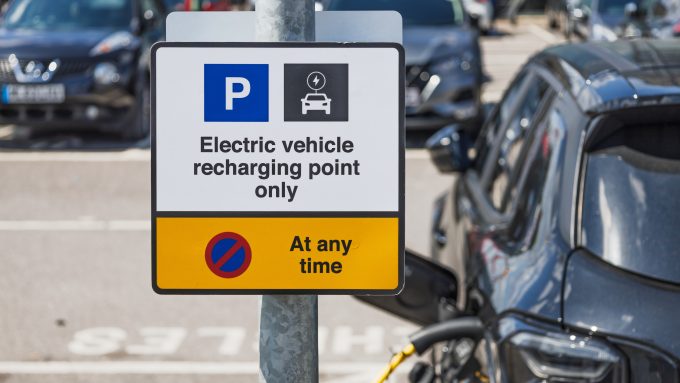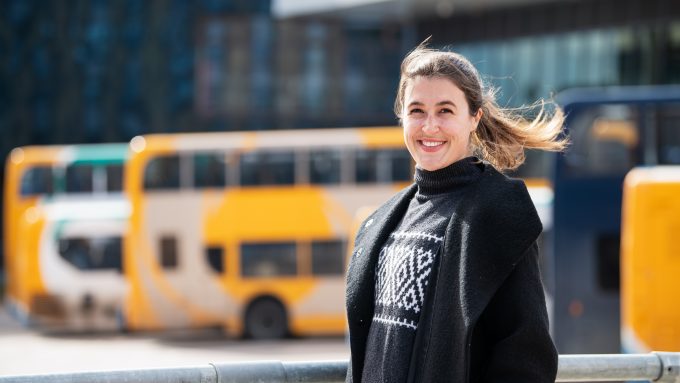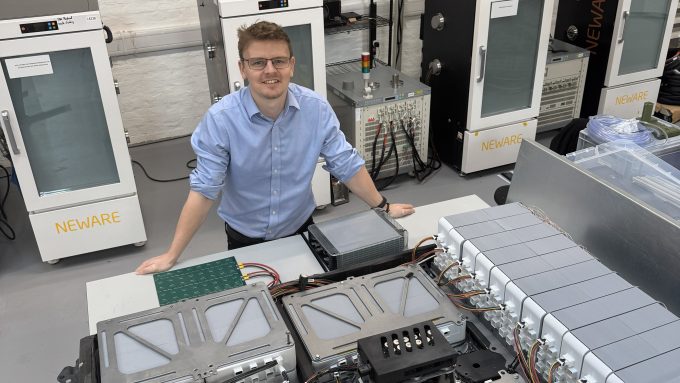
Innovation Brief: Post-Pandemic Public Space

Public Space in the age of COVID-19
In this chapter of the Innovation Brief on Post Pandemic Public Space we look at how COVID-19 has affected UK’s ‘outdoor’ public spaces including natural spaces, streets and town centres.
The very definition of ‘public space’ is constantly evolving. Whereas historically it tended to largely mean streets, squares and parks, it could now be considered to include transport hubs, the shared (non-branded shop) retail space in shopping centres, as well as privately owned public space (such as Paternoster Square, Liverpool One etc). The private-public space in particular is growing rapidly within our cities and its use is controlled by private companies and individuals, not by local or national. The focus of this particular report is on impacts and opportunities within the simpler definition of outdoor public spaces – but we will return to consider the broader, more complicated understanding of ‘public spaces’ in due course.
Globally, people have replaced in-person visits to town centres, sports and entertainment venues, public libraries and other mixed-use environments with virtual meetings and home workouts. Yet it is now clear that virtual is not a long-term replacement for real human interaction and that humans don’t cope well with isolation. The current crisis has reinforced the vital role that public places play in bringing people together and promoting wellbeing.
It has highlighted the challenge of making our public spaces both safe and vibrant. In this chapter, we discuss these challenges and the opportunities to address them.
In this article we will focus on three main areas:
- Right now – the current situation and impact on public spaces during lockdown. How can technology help correct the unequal access to natural spaces? How are public spaces being reconfigured to manage flows of people while minimising contact.
- What next? – the transitional restart for issues relating to public spaces in the post-lockdown, pre-vaccine period. How can the reallocation of public spaces help sustain businesses and neighbourhoods while distancing needs to be maintained? Can we introduce more flexibility into the planning system to help with this?
- Beyond recovery – a look further into the future of public spaces. What does the migration to online business models mean for public realm? How can we sustain and scale some of the changes made as a result of the crisis?
Natural Spaces gain prominence but unequal access becomes more apparent
Restrictions on the use of public space and social distancing have been key policy measures to reduce the pandemic’s spread and protect public health. At its peak, half of the world’s population was made to stay at home or restrict movement in public (Sandford, 2020). Although efforts to restart economies are already underway, we continue to experience uncertainty about what lies ahead and fear that our sense of place and space may be permanently transformed. When we do step outside our homes, we see unfamiliar and distant social interactions, raising questions about how our social use of public spaces may need to change for good.
On the bright side, the pandemic has provided a vital insight into the role of public spaces – natural and others – in ensuring people’s wellbeing, especially in times of crisis. Google data compiled by Citymetric shows that more people started visiting parks as countries eased their lockdown restrictions. A recent survey by Natural England revealed that the vast majority of adults (89%) in the UK agreed that green and natural spaces are good places for mental health and wellbeing.
Unequal access to natural spaces
The pandemic has also highlighted pre-existing inequalities in access to green and natural space. A study in Sheffield has shown that green space available to the ‘most deprived’ population is 60% more likely to get crowded compared to that available to the least deprived population. Recent data from ONS shows people on lower pay or who are unemployed are almost three times as likely as those in higher paid jobs to be without a garden. This means they rely more heavily on their local park.
This is important because people with access to a private garden have been found to have better mental health, and those with an outdoor space such as a yard are more likely to do some form of physical activity.
Apart from access, the quality of green space is crucial too. Quality of facilities – including toilets and cafes; regular maintenance; organised activities can help ensure a green space supports the wellbeing of its citizens equally.
Investment should target both the physical infrastructure of green space and the social activities that bring green space to life. Locally run programmes can help grow awareness and increase visits to green space. For example, the Chopwell Wood Health Project, near Gateshead, has combined GP referral schemes, educational programmes and woodland activities to promote visitation and physical activity. The project reported that 91% of referrals complete their prescribed programme and a high attendance for activities.
Technology too can help. Data analytics, for instance, can help identify hotspots which lack safe access to public green space. Through our joint work with the Queen Elizabeth Olympic Park, Connected Places Catapult has enabled several SMEs, such as OpenPlay and Living Map (see image) to test solutions that encourage more and better use of the park.
Adapting public spaces for social distancing and managing flows of people
Density and connectedness have been the key strengths of cities. However, COVID-19 has made these strengths look like weaknesses by increasing contagion risk. This makes managing dense flows of people in urban areas with safe social distancing much more urgent.
Cities have reacted to this by adopting measures such as wider pavements, and parks and other public spaces with markings on safe distance.
Designers and architects globally are considering ways to adapt outdoor spaces for social distancing. In Italy, Caret Studio has installed a social-distancing grid inside a piazza, while Paul Cocksedge has designed a social-distancing picnic blanket. As part of a recent initiative, creative agencies from around the world have envisioned how public spaces could be adapted to allow social distancing. Brand consultancy Dn&co has proposed developing an app that would project shifting patterns onto the ground allowing breaking up spaces organically, rather than in grids, as demonstrated in the image shown here, where they divided Parliament square using organic shapes.
Re-claiming public spaces
Some public spaces are already being adapted for residents. This includes extending pavements temporarily whilst traffic is reduced or using streets for socials or kids’ activities.
This short film shows how a play street unlocks happiness right on the doorstep.
Currently, these adaptations are largely being carried out at a local level. As the Design Council points out, as the acute phase of the pandemic is passing, we now need a more joined-up approach – as we discuss under Horizon 2 below.
As we enter the restart phase, there is no consensus about how long it will take for a vaccine to be developed. In addition, there is the uncomfortable possibility that COVID-19 might not be the only pandemic to occur in our lifetimes. It is therefore right to start discussing which ‘temporary’ measures adopted during the acute phase should be extended, scaled up and made permanent – and how to change systems of space governance to allow a more agile response to any future crisis.
Sustaining local ownership of space
With people largely confined to their local areas under lock down, we have seen impromptu, ‘locally owned’ adaptions to streets. There is now an opportunity to join up these activities in order to provide a wider network of such spaces with clear guidance on the ‘alternative uses’ for which they are intended (e.g. these streets can be used for play and exercise). A network of spaces could include:
- Make-Do street spaces
- Exercise/Activity Spaces: Establish/compile fixed distance local walking and exercise routes
- Children’s play: ‘Social-distance-friendly’ play activities and areas
- Work and study spaces
There are opportunities here in identifying and locating these current uses and creating tools to help join up and share experiences between communities, as well as plan at a less hyper-local level.
Reallocating public space to support businesses
As lockdown lifts and people are able to move around once more for non-essential purposes, we are seeing innovative uses of public outdoor spaces to minimise transmission risk. Allocating a proportion of public space to outdoor dining for example can help restaurants restart their businesses and boost the local economy.
Lithuanian capital Vilnius has allocated public spaces to bars and cafes, allowing them to lay tables and chairs across streets and squares to allow physical distancing during lockdown.
Rotterdam has allowed businesses to convert the parking spaces in front of their building into retail space, without needing a permit to do so.
San Donà di Piave, near Venice has launched a competition among restaurant and bar owners for the best outdoor arrangement that will enable people to safely come together – anything from movable furniture to tape art on the floor to encourage safe walking paths.
Embedding flexibility into urban planning
A lot of these types of opportunity require more flexibility in the planning system. While tenants wait for consumer confidence to recover, ‘meanwhile’ uses could help create economic activity and avoid vacant fronts – but are currently held back by inflexible planning regulations. Meanwhile uses take advantage of a window of opportunity on a site, before and after another use. And not all meanwhile uses are short term. Some meanwhile uses are offered long leases, for instance in regeneration projects spanning decades.
These uses can range from community activities to arts, culture, and commercial uses such as pop-up retail. Public spaces such as libraries, community centres and sport centres too could be repurposed to provide space for socially distanced work or study or simply, time-out from homes.
Such meanwhile uses have the potential to optimise asset use by locals, particularly through their potential to offer mixed use space. In London, for instance, where meanwhile sector has boomed recently, a large proportion of meanwhile uses are mixed use – most of them combining retail with food courts and bars. The Centre for London’s report “Meanwhile, In London: Making Use Of London’s Empty Spaces” provides some interesting insights and examples of such meanwhile uses within the context of London.
The pandemic has stimulated both short term disruption and ‘quick fixes’ to immediate problems as well as accelerating existing trends. As we emerge from the crisis we should make deliberate choices about the changes we wish to sustain and consider the implications of these trends on how we use public space.
Adapting our use of public space to changing business models
The challenges faced by non-essential retailers and the food service industry have been made much worse by the pandemic. In the second week of lockdown, footfall in town centres and high streets declined by 81% compared to last year, forcing ailing businesses to shut their doors permanently.
At the same time, some businesses have adapted to cater to a ‘socially distanced’ market, such as by moving completely to online deliveries, take-aways or into adjacent products. For these businesses the pandemic has made them ready for the future – but the way in which we use public space has not necessarily caught up.
With online shopping and home food delivery on the rise, the demand for drop off and delivery space has shot up. This increased demand for curb space may reduce the availability of on-street parking but will need to be counter-balanced against requirements for a more extensive electric charge point network for electric vehicles. Though perhaps the two elements can be combined through solutions such as these small-scale electric ‘last mile’ delivery vehicles.
DPD has taken delivery of its first ten EAV P1 electric-assist cargo bikes. Five of them are being tested in the streets of London, York and Newbury, while the other five are being shipped to DPD’s business units in Ireland, Spain, Germany, Portugal and France.
Sustaining and scaling access to green spaces
As discussed above (and further in our brief on wellbeing), access to the natural environment is important to maintain physical and mental health. Currently such access is unevenly distributed. As we think about the longer term, we should consider reconfiguring public transport to make this access easier. For example in London, it is relatively easy to access Hampstead Heath through public means – but peripheral locations such as Rainham Marshes and the Wetland Centre are less accessible.
Building safer, flexible and vibrant public places
If you are working on an innovation that might contribute to the public spaces ecosystem as outlined in this chapter, and would like to see it feature in this, or any future reports, then please tell us about it. If you think we can help you with your innovation – or if you are looking for an innovation provider, then please get in touch and help us create connected places that are fit for the future.





